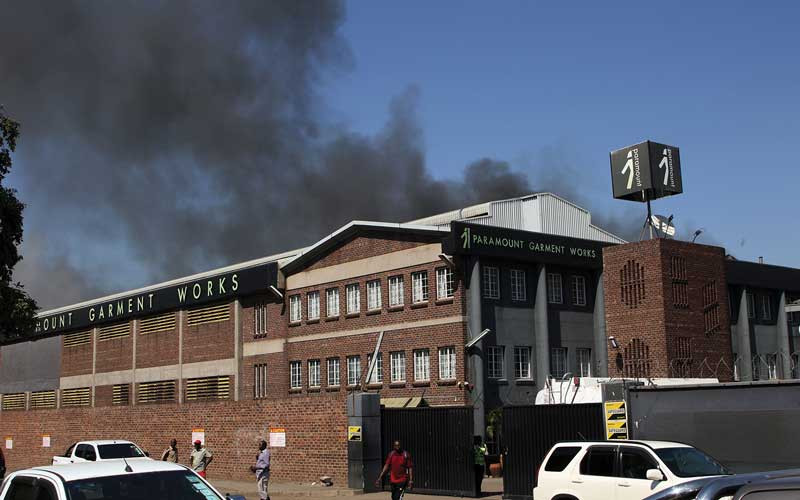
LEADING clothing supplier Paramount Garment Works has lost millions of dollars to a fire outbreak that started last Monday and was only extinguished two days later, NewsDay Business can
reveal.
Two weeks ago, the company celebrated its 75th anniversary and a 20% growth which it would leverage on to produce 2,5 million garments by the end of next year.
The increase in garments would be from two million this year, the company had plans to start paying its employees full US dollar wages from January next year.
However, a fire broke out at one of its warehouses last week on Monday that saw the garment maker losing millions of dollars in merchandise. While it is unclear what caused the fire, the company is suspecting an electrical fault.
“Well, we will have to wait and see, it’s in the millions,” Paramount Garments finance director Jeremy Youmans told NewsDay Business.
“And the structure of the building will have to be assessed by engineers and the insurance company obviously will be involved to (find out) how much of the building needs to be totally rebuilt or how they (will) deal with it. (But) we are suspecting an electrical fault, but we don’t know for certain, the fire department will investigate that.”
He said they had not been able to access the warehouses, but that from the initial assessment, it was a total loss.
- Paramount Garment celebrates 75th anniversary
- Paramount Garments loses millions to three-day fire
- Paramount blazes 10 days on
- Paramount Garments says fire damages top US$30m
Keep Reading
“With the fire still burning we can’t get in until it’s fully out and the building is cooled down,” Youmans added.
The company is currently operating at 50% capacity with 2 000 workers and 60 assembly lines with 30 lines currently working.
The company supplies garments to regional and international markets such as South Africa, Mozambique, Zambia and Germany, among others.
Speaking to NewsDay Business, chief fire officer Lovemore Mafukidze said the bulky burning materials and the water issues were some of the biggest challenges the fire fighters faced in trying to extinguish the fire.
“But, in this case, we are dealing with what we call ordinary combustibles, things like clothing. They are put out using water because water has a high capacity of absorbing heat. So, practically in Harare, the other issue that we have is water and the amount of fabric that was inside was huge,” Mafukidze said.
While the fire had been extinguished, there was still smoke coming out of the warehouse, he added.










